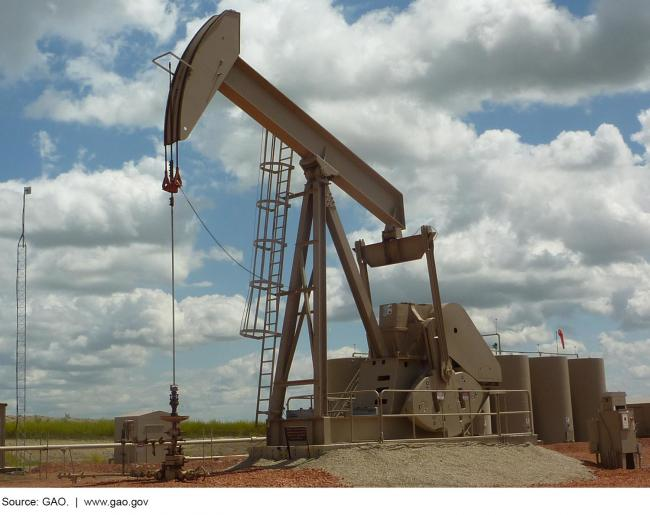Strategic Petroleum Reserve: Observations on the Emergency Stockpile
Fast Facts
The Strategic Petroleum Reserve, managed by the Department of Energy, is the nation's stockpile of emergency oil stored in salt caverns along the Gulf Coast.
This testimony covers our May 2018 report, which found that DOE may need less of the reserve's storage space by 2027, after congressionally mandated oil sales.
While DOE planned to explore some options for the excess capacity—i.e., closing sites or leasing them to other countries—we identified other options. For example, DOE could consider leasing storage facilities to private industry.
In the report, we recommended that DOE examine a full range of options, among other things.

Photo of an oil rig
Highlights
What GAO Found
The Department of Energy (DOE) has not identified the optimal size of the Strategic Petroleum Reserve (SPR). In 2016, DOE completed a long-term strategic review of the SPR after its last comprehensive examination was conducted in 2005. The 2016 review examined the benefits of several SPR sizes, but it did not identify an optimal size and was limited in several ways. In particular, in the review, DOE did not fully consider recent and expected future changes in market conditions, such as the implications of projected fluctuations in net imports or the role of the private sector in responding to supply disruptions. These changes have contributed to SPR and private reserves reaching historically high levels on a net imports basis. These changes are expected to continue to evolve, and according to government projections, the United States will become a net exporter in the late 2020s before again becoming a net importer between 2040 and 2050. GAO has found that agencies should reexamine their programs if conditions change. GAO recommended that DOE supplement its 2016 review by conducting an additional analysis, and take actions to ensure the agency periodically conducts a strategic review of the SPR. DOE generally agreed with these recommendations.
DOE has taken steps to account for congressionally mandated sales of SPR crude oil in its $1.4 billion modernization plans for SPR's infrastructure and facilities. However, DOE's current plans, developed in 2016, are based on information largely developed prior to recent congressionally mandated sales of an additional 117 million barrels of oil. According to DOE officials, the agency began a study in March 2018 to assess the effects of these sales on the SPR's modernization. However, GAO reported that this study was not examining a full range of options for handling any excess SPR assets that may be created by currently mandated sales or any additional sales that may be mandated in the future, inconsistent with an agency order on real property asset management that calls for identifying excess assets. For example, according to officials, DOE does not currently have the authority to lease unused storage capacity to the private sector, and DOE was not planning to examine this option. If authorized, leasing unused SPR storage capacity could generate revenues that could help offset the costs of modernization. GAO recommended that DOE should consider a full range of options for handling potentially excess assets and, if needed, request congressional authority for the disposition of these assets. DOE agreed with this recommendation.
Why GAO Did This Study
Over 4 decades ago, Congress authorized the SPR—the world's largest government-owned stockpile of emergency crude oil—to reduce the impact of disruptions in supplies of petroleum products. Since 2015, Congress has also mandated sales of SPR oil to fund the modernization of SPR facilities and other national priorities. DOE manages the SPR, whose storage and related infrastructure is aging, and has plans to modernize its facilities. As a member of the International Energy Agency, the United States is obligated to maintain reserves equivalent to at least 90 days of the previous year's net imports (imports minus exports). As of March 2018, the SPR held about 665 million barrels of crude oil, about 138 days of net imports.
This testimony highlights GAO's May 2018 report on the SPR, including the extent to which (1) DOE has identified the optimal size of the SPR, and (2) DOE's plans for modernizing the SPR take into account the effects of congressionally mandated crude oil sales. GAO reviewed DOE's documents and studies and interviewed agency officials.
Recommendations
GAO made four recommendations, including that DOE (1) supplement the 2016 review by conducting an additional analysis, (2) ensure it periodically reexamines the SPR, and (3) consider a full range of options for handling potentially excess assets. DOE partially agreed with the first recommendation and agreed with the other two recommendations.
